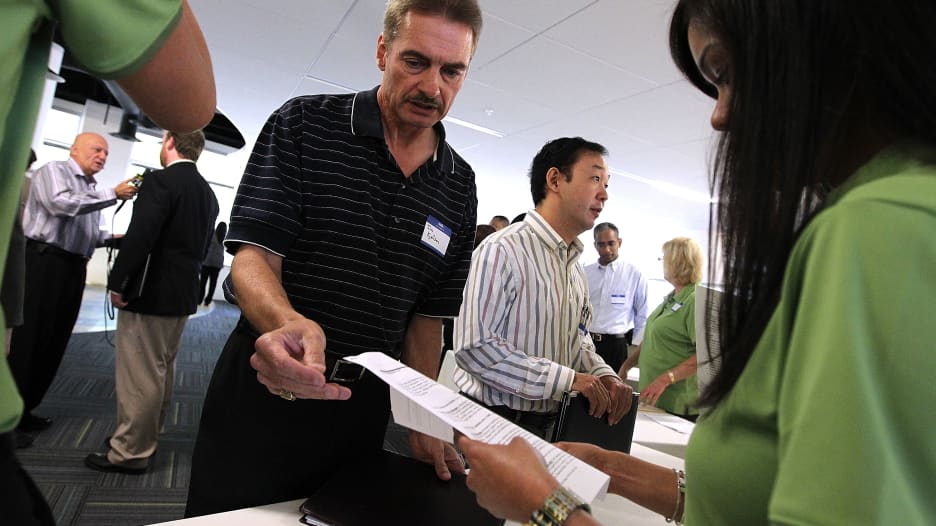نيويورك، الولايات المتحدة الأمريكية (CNN)-- تطوعت لمساعدة زميل جديد لك في العمل، لكنك تحاول الآن معرفة كيف يمكنك بالفعل تخصيص وقت للقيام بكل ذلك.
يحدث ذلك كثيرًا خاصة بالنسبة للنساء. غالبًا ما يطلب المديرون متطوعين أو في بعض الحالات، يكلفون العمال بتحمل مسؤوليات غير مرتبطة مباشرة بأدوارهم أو تقييمات الأداء أو النمو الوظيفي. ولكن لمجرد أن رئيسك في العمل يبحث عن المساعدة لا يعني أنه يتعين عليك دائمًا التقدم.
قالت ليندا بابكوك، أستاذة الاقتصاد بجامعة كارنيجي ميلون والمؤلفة المشاركة لكتابThe No Club: Putting a Stop to Women's Dead-end Work: "لا يعتمد كل شيء على تقييمات الأداء الخاصة بك، هناك الكثير من العمل الذي يتم إنجازه ولا يتم تتبعه أو شكره أو تقييمه."
أضافت أن الأمثلة تشمل أن تكون في بعض اللجان على مستوى الشركة ككل -مثل لجنة السلامة- المساعدة في التوظيف (إذا كنت لا تعمل في الموارد البشرية)، ومساعدة الآخرين في العمل أو المكتب.
من المؤكد أن الكثير من هذا العمل الإضافي هو جزء ضروري لإدارة عمل تجاري ناجح ولكن يجب توزيعه بالتساوي، وهذا لا يحدث دائمًا.
قالت بابكوك: "عندما يكون لدينا مهمة لا تساعد على الترقية، فإننا نفكر في النساء أولاً ونطلب منهن أكثر من الرجال"، وفقًا لبحث أجرته مع ثلاثة أساتذة آخرين، من المرجح أن يطلب المديرون من المرأة القيام بهذه المهام غير المرئية بنسبة 50٪ أكثر من الرجل. ووجدت أيضًا أن النساء أكثر ميلًا أيضًا للتطوع في هذه المهام.
أوضحت ليز فيسترلوند، أستاذة الاقتصاد في جامعة بيتسبرغ وأحد مؤلفي "The No Club"، أن وجود جدول مزدحم للغاية للعمل غير المرئي أو وراء الكواليس يمكن أن يعيق النمو المهني للمرأة وتعويضها.
أخذ القرار
يمكن أن يؤدي الحمل الزائد على هذه المهام أيضًا إلى الإضرار بالنساء بما يتجاوز رواتبهن.
قالت فيسترلوند: "إذا انتهى بك الأمر إلى القيام بكل هذه المهام الداخلية الأخرى، فستفقد الثقة في قدرتك على إظهار المهارات التي اكتسبتها وتم توظيفك من أجلها."
لتقييم ما إذا كان يجب تولي مهمة ما، تنصح بتحديد ما يعتبر عملاً قابلاً للترقية وغير قابل للترقية لدور ما وكم من المتوقع أن يساهم العمال به.
اقترحت التحدث إلى الزملاء والمشرفين وطرح سؤال مثل: "أريد المساهمة بأكبر قدر ممكن في هذه المنظمة كيف أفعل ذلك... ما هي توقعاتك؟"
بمجرد أن يكون لديك إحساس بالتوقعات، اقترحت تحديد العمل الذي لن يساعدك في تقدمك الوظيفي حيث يمكنك الاستفادة بشكل أفضل من مهاراتك والاستمتاع بنفس الوقت بالعمل الذي قد لا يكون حاسمًا في مسيرتك المهنية.
الشعور بالرضا تجاه قول "لا"
لكن قول "لا" يمكن أن يكون أسهل من الفعل، ويمكن أن يكون له تأثير على النساء أكبر من تأثير الرجال.
قالت بابكوك إن بحثها يظهر أنه عندما تقول النساء "لا" في العمل، غالباً ما يُنظر إليهن على أنهن لسن متعاونات في الفريق. عندما يتعلق الأمر بقول لا، لا تركز على سبب عدم قدرتك على فعل ذلك.
قالت بابكوك: "الناس عادة ما يقدمون عذرا... هذا لا يساعد الطالب... كل ما يريدونه هو المساعدة. إذا طلب منك شخص ما أن تفعل شيئًا غير مفيد لك، حاول إيجاد شخص ضمن الشركة يمكن ترقيته من أجل هذا العمل؟
إذا كنت تشعر أنك لا تستطيع أن تقول "لا"، فقد اقترحت الموافقة على تولي المهمة، ولكن اطلب من رئيسك اعطاء مهمة أخرى على عاتقك لشخص آخر. أو يمكنك أن تقول: "هل يمكننا تقسيم هذه المهمة إلى أجزاء ومشاركتها بيننا نحن الخمسة في هذه الوحدة؟"
لا ينبغي أن يكون على الموظفين قول "لا"
لا يجب أن يقع العبء على الموظفين فقط عندما يتعلق الأمر بالتأكد من توزيع العمل الذي لا يساعد على الترقية بالتساوي.
وقالت فيسترلوند إن "إصلاح هذه المشكلة يقع على عاتق صاحب العمل حقًا... لا ينبغي أن يعطوا العمل لشخص ما لمجرد أنهم يعتقدون أنهم أقل ترددًا في توليه. يجب أن يمنحوا الموظفين العمل الذي يجيدون القيام به".
وأضافت أن أصحاب العمل يجب أن يكونوا واضحين بشأن ما يجب أن يقضي العمال وقتهم فيه وما الذي سيتم تضمينه في مراجعات أدائهم.





